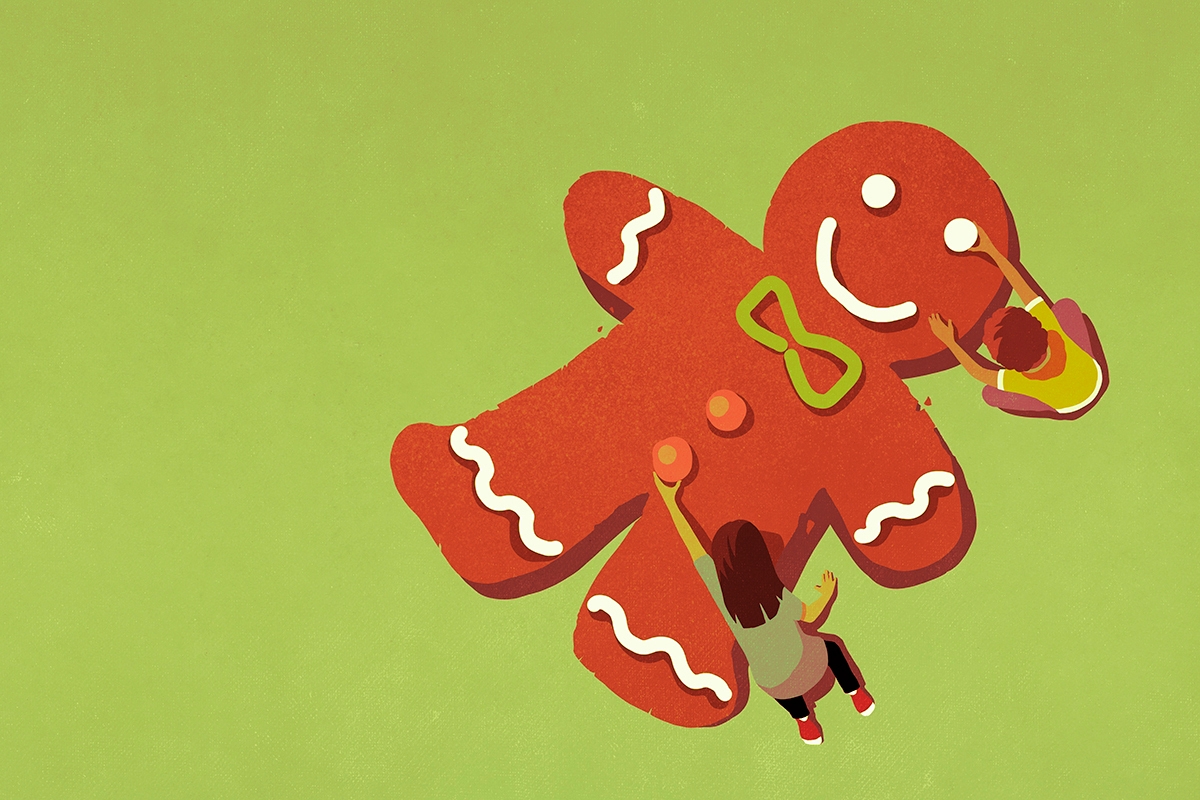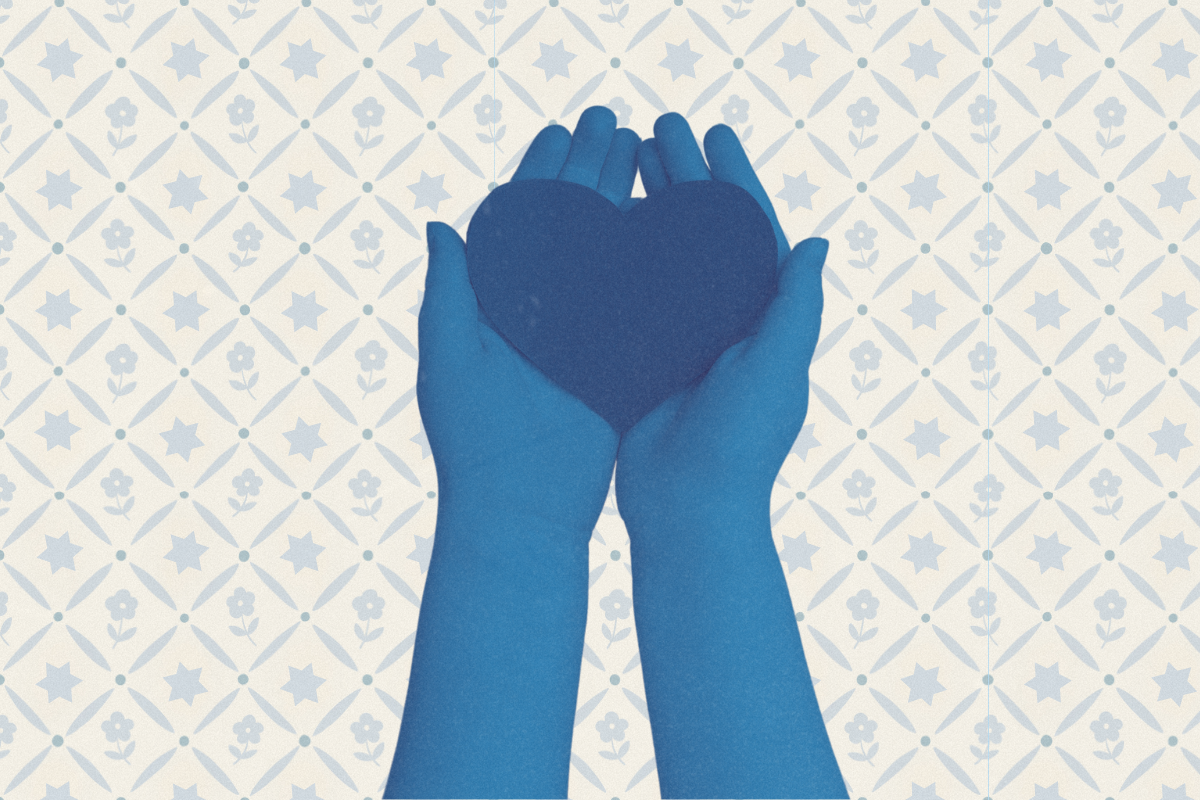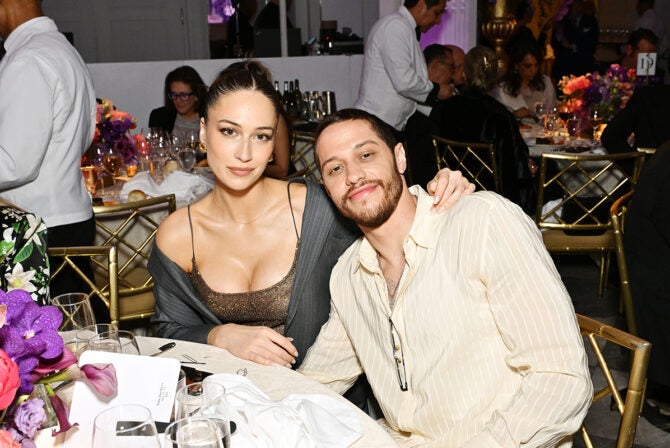When I saw the dreidel activity in my kindergartener’s weekly packet of remote learning worksheets a few weeks ago, I heaved a deep, internal sigh. I know these kinds of lessons are supposed to make my Jewish kid feel seen and included, but wherever there are dreidel worksheets, the Santa Claus worksheets are not far behind. In my daughter’s case, the dreidel worksheet ushered in a weeklong study of “The Gingerbread Man” folktale, which was supplemented with gingerbread house construction and ornament crafts.
My kids (6, 3, and 5 months) are joyfully Jewish, and they also know that most of their friends celebrate Christmas. Thankfully, at least for now, they’re not jealous. But it doesn’t help when public schools in New Haven, where we live, insist on celebrating Christmas all through the month of December.
One of the effects of remote school is that parents have a better sense than ever about exactly what’s going on in their kids’ classrooms. It’s very easy to see, throughout the day, what kids are working on and how teachers teach. Sometimes what parents view isn’t pleasant — for example, many Black parents have witnessed their kids experiencing rampant racism. And for Jewish parents like my husband and me, we get to see just how Christmas-infused the December curriculum really is.
My daughter’s kindergarten teacher is intelligent, talented, sweet, and possibly the most patient person on the planet. I know this because for the last few months she has been a constant presence at our dining room table where our daughter does her remote schooling. So far, despite all the pitfalls of remote learning, kindergarten has been a very positive experience for our daughter.
So, when the dreidel and gingerbread worksheets first came home, I was cautiously optimistic that we would be able to talk this through. I sent the teacher a note thanking her for all she does, and I respectfully asked her to reconsider her December curriculum. I closed with this: “I realize that all you are doing comes from a place of good intent. But I’m writing to ask most sincerely that you let public school be secular and let religion be celebrated in the home.”
Here is the response I received:
“Thank you for your feedback. During this time of year, we do incorporate seasonal happenings/holidays (as many as possible) into our literacy and math lessons. Our objective is to teach about the different holidays with a secular lens and in accordance with our district’s culturally responsive education policy.”
Here’s where I heaved my second large, internal sigh. This teacher is experienced, dedicated, and well-meaning — but frankly, this is total nonsense.
First, “seasonal happenings/holidays,” as we all know, is code for Christmas. Hanukkah (and sometimes Kwanzaa) are brought in to give the appearance of greater inclusion. But they are there only to make the Christmas lesson seem less chauvinistic than it really is.
Second, Christmas — which, let’s remember, is the annual commemoration of the birth of Jesus, who is understood by Christians to be their messiah and savior — is not secular. Focusing on the more commercial and less Jesus-infused trappings of the holiday doesn’t change that fact. At its heart, Christmas is not a generic “winter celebration.” It would be most respectful to those for whom Christmas is a serious religious festival, as well as those who are not Christian at all, not to pretend it is simply a secular “seasonal happening.”
Third, reindeer worksheets are not “culturally responsive education,” which is designed to “create a learning environment that is engaging and accessible to a broader range of students,” according to Teachaway, a professional development site for teachers. Culturally responsive education is supposed to be about creating a classroom environment that better serves minority students — for example, reading books with non-white protagonists. It’s not about doubling-down on majority culture.
And to be clear, I’m all for cultural education — I would be thrilled for my kids to learn about world religions in school. But would anyone with the genuine aim of implementing a multicultural curriculum center it on a secularized celebration of one of the major holidays of the majority culture? This strikes me as a disingenuous approach, even if it is supplemented with a nod to other celebrations that may be happening at approximately the same season. True multicultural education should center minority experiences. Want to talk about light in December? Let’s start with Diwali, shall we?
Let’s suppose, though, that my kid’s school had decided teaching Christmas was an important educational objective — because, after all, in America it is the most commonly-celebrated holiday this time of year. Does the curriculum give Christmas any justice if it’s merely reduced to colored lights and gingerbread men? How does counting candy canes help children intelligently understand a holiday that has profound meaning for millions upon millions of Christians the world over?
What irks me is that the school isn’t really teaching Christmas — they’re celebrating Christmas. The themed worksheets and activities are of a piece with December classroom parties with piles of green-and-red cookies and “winter” concerts that feature a raft of Christmas songs (plus that tired earworm “I Have a Little Dreidel”). Frankly, such celebrations are a breach of the separation of church and state. When I send my kids to public school, I expect that religion will not be foisted upon them.
I don’t mean to be a grinch. I get that it’s dark and cold and people are tired in December. I get that it can be hard for teachers and students to focus in the lead-up to the first real vacation they will have had in months. I’m all for lightening the load and finding something to celebrate. But in public school, let it be a genuinely secular celebration of the season. There is plenty of magic to be had in winter: snow, icicles, the solstice. These natural wonders are for everyone, plus they lend themselves to some pretty cool science lessons.
If you think the pull of Christmas is too strong this time of year, or a truly secular education is unattainable, let me provide a counterexample. My two younger children attend (or, at least in non-pandemic-times, they used to attend) a private Quaker daycare that is deeply committed to diversity. This school also has a strict no-holidays policy. The kids do not celebrate Christmas or Easter — nor do they celebrate Hanukkah or Passover. They also don’t trace their hands and make turkeys for Thanksgiving and they don’t dress up for Halloween. For these tots, school is about friendship, seasons, building with blocks, singing, imaginative play, and all those other things that are universal to the preschool set. I had nothing to do with this policy but I can tell you that it is delightful. Yes, I was initially bummed not to see the 3-year-olds decked out for Halloween. But I quickly got over it, and I wish our public elementary schools would follow their example.
After our email exchange, my kindergartener’s teacher didn’t cancel her Christmas worksheets, but she did offer to supply an alternative curriculum for my daughter for the last few weeks of December. The live lessons would be the same, but the offline work would be different. If my daughter were in the physical classroom, I would worry a specialized non-Christmas curriculum for December might embarrass her.
In the end, we came up with an alternative plan: We started her winter break two weeks early. Instead of logging into her virtual classroom, we work on a bit of reading and math every day, and we also supplement with reading chapter books aloud and Hebrew lessons. We celebrated Hanukkah at home with candle-lighting, songs, stories, and lots of cooking. We also spent four straight days playing in the first good snowfall our city has received in two years — the sledding hill was practically empty because all the other kids were tied to their remote learning schedules.
For this year, this solution is working beautifully. But there are a lot more Christmases to come.
Header image by Malte Mueller/ Getty Images








